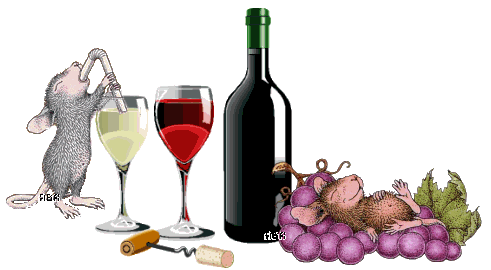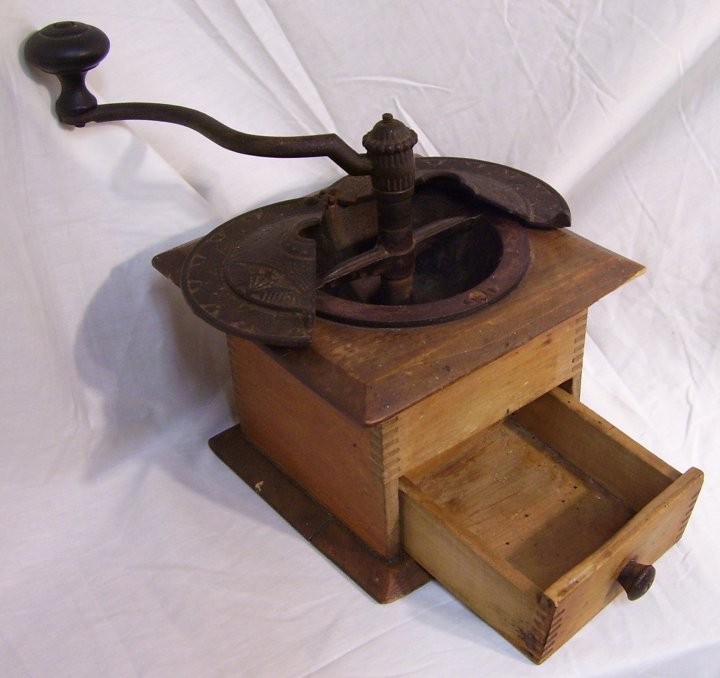Bullshot
Beef consomme and vodka recipe
Served hot from a flask or with ice, the meaty bullshot is long overdue a revival

Bullshot …”It’s Marlon Brando in The Wild One”. Photograph: Jill Mead for the Guardian
This classic mix of beef consomme and vodka has managed to acquire an undeservedly tweedy reputation in Britain. It is often drunk hot, poured from a Thermos on crisp winter walks – the steam rising and mingling with the cloudy breath of walkers holding out their cups for a dose.
But served over cracked ice after dark it is a more dangerous beast. Bullshot was probably invented in the 50s in the US, by someone with a twisted mind. Meat and alcohol. In a glass. With pepper. Oh yeah, and chilli.
It’s Marlon Brando in The Wild One. It’s Shane McGowan on an experimental day. In the early 70s, Malcolm McDowell drank it while publicising A Clockwork Orange. He “bundled in against the cold in a leather jacket,” recorded one journalist, “[on his face] the beginning of a smile that never quite finished, he sat down and ordered a bullshot – bouillon and vodka.”
I first had it in a dive bar on a snowy evening in New York in the late 80s – the first time I was ever alone there. As the vodka flush hit my cheeks, I was momentarily James Dean. And then I caught a glimpse in the back-bar mirror of a chubby English schoolboy with a fake ID holding his cigarette like a square.
Bullshot is best mixed with homemade broth, but don’t let this stop you – it still tastes great with consomme from a can. There are many variations. If you have it heated, I think it needs a little dry sherry in the mix to give it more body. Some people add orange juice, as well as lemon, to the mix.
I like it strong, cold and straight, with a lot of Worcestershire sauce, a good squeeze of lemon and a little more vodka than given in the recipe that follows.
Make your own bullshot
Serves 1
90ml beef consomme
45ml vodka
A dash of Worcestershire sauce
A squeeze of lemon
Tabasco
Black pepper
1 Mix all the ingredients together, adding Tabasco and black pepper to taste.
2 Shake with cracked ice and strain into a highball glass with extra ice. This drink is supposed to be more boozy than a Bloody Mary but if you would prefer a slightly weaker version, simply add an extra 50ml of the consomme.
How to eat: fish and chips
What’s your idea of faultless fish and chips? Tony Naylor prepares the ground for the battle of the batter – will there be peas in our time?

This is not the Guardian photo, theirs is a fancy interactive thingy
This month on How to Eat – the series attempting to isolate the perfect iteration of the nation’s favourite dishes – we turn our forensic fork to a true British classic: fish ‘n’ chips.
It fed an embattled nation during the second world war, and, in Yorkshire, it could yet spark a third conflagration – if you to try fry it in vegetable oil. Over 150 years after it was “invented”, it remains Britain’s favourite takeaway. There are still, it is reported, eight chippies for every branch of McDonald’s. But what makes great fish and chips? It’s time to separate the truth from the codswallop.
Cooked where?
At the chippy, and only the chippy. Yes, in theory, you could cook fish and chips at home. But is it wise? Unless your local chippy is one of those fraudulent frozen fish and gristle-burger joints, then its fryers will invariably be armed with better batter and fatter fillets than you can muster. Plus, fish and chips is supposed to feel like a treat. You can’t have a “chippy tea”, if you are the chippy.
Fish and chips in a pub or restaurant, meanwhile, just feels wrong. It shouldn’t be eaten indoors, with a knife and fork. More importantly, professional chefs can rarely cook fish and chips without refining it: spiking the batter with vodka; minting the mushy peas; serving your “chunky” chips in a metal bucket (it’s the seaside, geddit?); all of which detracts from the dirty pleasure of fish and chips. Plus, to justify that £11 price tag, restaurants tend to serve ludicrously big portions.
In a restaurant, your fish and chips will be cooked to order, but your local chippy should be doing that too. If not, find one that does.
Served how?
In a polystyrene tray or one of those posh corrugated-cardboard boxes. To be eaten with a tiny, fiddly wooden fork and greasy fingers. It’s the only way. Picture it: it’s Friday, chippy tea night. Was the magic not lost the moment your mum insisted on getting the plates out? Exactly. You knew this instinctively even before (thanks, Harold McGee) you had the scientific evidence to prove it. To stay crisp, batter needs circulating air. Any steam needs to be able to escape. Sat on a plate, trapped under hot fish, it will quickly reabsorb moisture and get soggy.
Skin on, skin off?
Off. The fish is essentially a delivery vehicle for the batter. Who wants to scrape 50% of it off an unwelcome gluey insole?
Condiments
Salt, Sarsons, no pepper. Never tomato sauce. Gravy or curry sauce with chips, but not with fish. It’s barbaric. As for tartare sauce, a good, homemade caper-packed one is a wonderful thing, but you do have to choose between tartare or mushy peas. There is something about the cashmere textural comfort of freshly cooked, vibrant mushy peas and the sharp, creamy jangle of tartare that jars. Each places fish and chips in a different register.
Sides
Garden peas are not acceptable. Baked beans take the whole plate in a different sweeter direction and are better kept separate and eaten with chips. Bread and butter is essential, the chip butty an exceptional amuse and / or savoury course, as you see fit.
Drinks
Strong tea, light beer or your favourite fizzy pop. Personally, I think cola’s caramel flavours are the most complementary. Either way, there’s a lot of grease here, you need plenty of (preferably carbonated) liquid, to cut through it. Wine is a waste, water too bloating.
Chips
Yes, you definitely need chips. In fact I would go as far as to say, you can’t have fish and chips without them. And chips, as Oliver Thring touched on recently here, doesn’t mean fries, huge wedges, oven or frozen, it means Maris Pipers chipped that morning, as thick as your finger, and cooked to perfection within a spectrum that starts, if using veg oil, at golden and buttery, and ends, equally fluffily, if frying in beef dripping, with chips the colour of autumn leaves.
Personally, I don’t think triple-cooked work, here. That glassy, shattering exterior, that clinically perfect interior, produces a chip that, in this context, is too dry
Fish
Cod or haddock? Haddock or cod? I don’t really care. As long as it is fresh, sweet and muscular enough to separate into big satisfying flakes – and is sustainably caught, of course – there is almost nothing to choose between the two. And both, ultimately, are secondary to the batter.
Batter
The real star of the fish and chips show, batter (which should be cooked through with no raw batter within), is at its best when it is well seasoned and made using a raising agent, beer or malt vinegar, which, as Felicity Cloake has observed, delivers a nicely “citric” twist.
Now, as you may have noticed, batters differ massively, in terms of their colour (determined by the type of flour, the amount of salt used and sometimes added colourings), and their surface texture. Batters can be smooth, spiky, swirly, curly. I had assumed, on the occasions that I have pondered this each side of the Lancashire (flatter), Yorkshire (spikier) border, that this was due to the different oils used, but apparently – and thanks to the National Federation of Fish Friers and Mark Drummond at Towngate Fisheries for the technical info – it’s down to the raising agent, the amount you add and how much the batter has been beaten. “Why different areas of the country like different batter styles, I can’t say,” concedes Drummond. But they do, with the big food service outfits offering numerous batter mixes, including a rippled Scottish one.
The best? I will happily eat either, but for me it’s got be a flat batter cooked in veg oil. A well-seasoned light, but not tempura-light, batter delivers enough flavour without overwhelming the fish, whereas fish cooked in beef dripping can be more reminiscent of roast dinner. The fish should steam within a sealed carapace of batter. Spikier batters tend to crack, leaving the fish exposed, and the final product heavy and oily.
That said, chips cooked in vegetable oil are often bland and anaemic, where their bronzed, beef-cooked cousins both look better and pack an unbeatable, residual savoury oomph. Therefore, until some far-sighted chip shop starts frying its fish in veg oil and its chips in beef dripping (would that even work, harmoniously, in the mouth?), my absolutely perfect plate of fish and chips may remain a distant dream.
But, enough of this blue skies bunkum, how do you eat your fish and chips?
.
Well, there you have it, everything you wanted to know about fish ‘n chips…. and more.
When I was a lad, millions of years ago, in New Zealand fish ‘n chips came in a paper parcel, newspaper.

This one is neatly taped, ours were just tucked in at the ends.
 But someone in their wisdom… idiots, decided that the lead in the printing ink or process wasn’t good for us, so they changed to unused newsprint. Fish ‘n chips were never the same from that moment on.
But someone in their wisdom… idiots, decided that the lead in the printing ink or process wasn’t good for us, so they changed to unused newsprint. Fish ‘n chips were never the same from that moment on.
There were only two ways to eat them. One if you were at school, you merely ripped a gapping hole in one end, big enough for your tiny fist; the other was to spread the parcel open on the front room floor in front of the telly.
I have to comment on the condiments. In our house my brother and sister used tomato sauce, my father and I used Lea & Perrins (never Boss) Worcestershire Sauce. Things like vinegar and lemon were something they did in other countries, and tartare sauce was not for the hoipoloi like us.
But I must agree in essence with all the above. Fish ‘n chips is not just food, it’s an art and a science.
Worcestershire Sauce
The world’s only true condiment sauce. Tomato sauce (ketchup to our American cousins), bottle mustard and the ilk are not real sauces. Although tomato sauce could be, as it is cooked in it’s preparation, but mustard in a bottle from the supermarket is generally crap (and it looks like baby poop too). Mustard is a paste freshly made from mustard power.
There is only one Worcestershire sauce and that is Lea & Perrins. It is inimitable, unique and the recipe is a closely guarded secret.
But I’m not going to tell you anymore about it here. You can go to a perfectly good Lea & Perrins History page and read it all for yourself.
I will only say that I love it. It goes with nearly everything.
































































